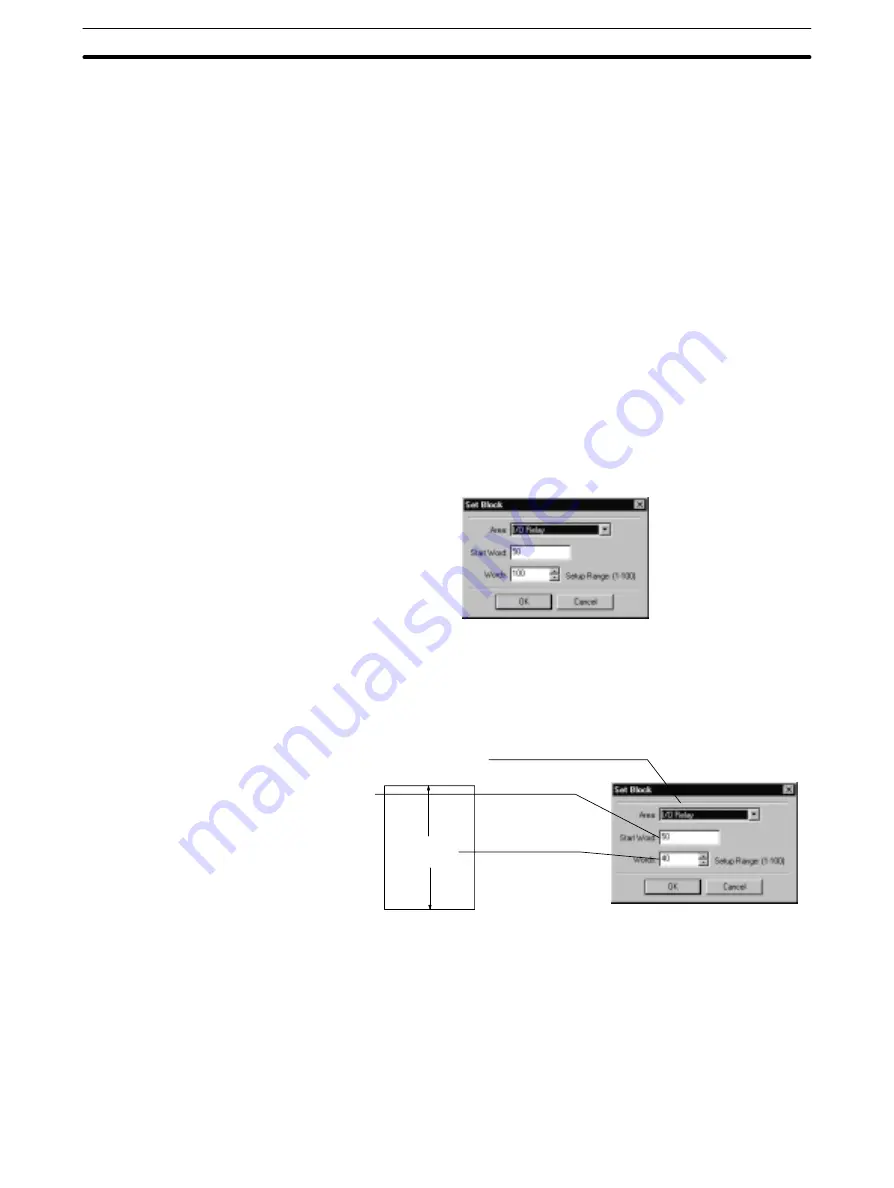
3-6
Section
Creating and Editing Master Parameters
62
Note These are Slaves that perform data reading and writing only; they do
not transfer I/O through remote I/O.
It is easy to see the allocation of PC data areas when the Slaves are dis-
played in word-address order.
Click on “Remove” to erase the selected Slave’s remote I/O allocation.
Click on “Edit” to display or edit the selected Slave’s remote I/O allocation.
Click on “Initialize” to erase the remote I/O allocation settings for all of the
Slaves.
2. Set whether blocks 1 and 2 will be used in the output and input areas. Click
on the square next to the block number to change this setting; a check (
n
)
mark indicates that the block isn’t being used. At least one block must be
used.
Note In a CompoBus/D Network, remote I/O communications can be car-
ried out in 2 different areas each in both the output and input areas. If
an allocation is not made for a Slave, the Master of the Slave and I/O
communications will stop and it will not be possible to start them from
either the software switches or the CompoBus/D Configurator.
3. To set the starting word address and number of words for each block, click
on the “Chg” box next to the starting word address. The following window will
be displayed.
4. Set the block’s data area, starting word, and number of words.
The data area, starting word, and number of words that can be set depends
on the model of Master Unit and PC being used. For details, refer to the
CompoBus/D (DeviceNet) Operation Manual.
The following diagram shows example settings for block 1.
I/O Relay
(CIO Area)
Area
Starting word
Number of words
CIO 0050
CIO 0089
40 words
5. Click on “OK” to set the block’s memory area.
Note If the number of words actually allocated are less than the number of
words set for the block, the number of words in the block will be
adjusted automatically when the parameters are saved to a Master
parameters file or transferred to a Master Unit. The starting word
address won’t be changed.
6. Allocate remote I/O to each Slave. There are two ways to allocate I/O:
•
Method 1:
Edit the I/O Allocation for each Slave with the editing window.






























